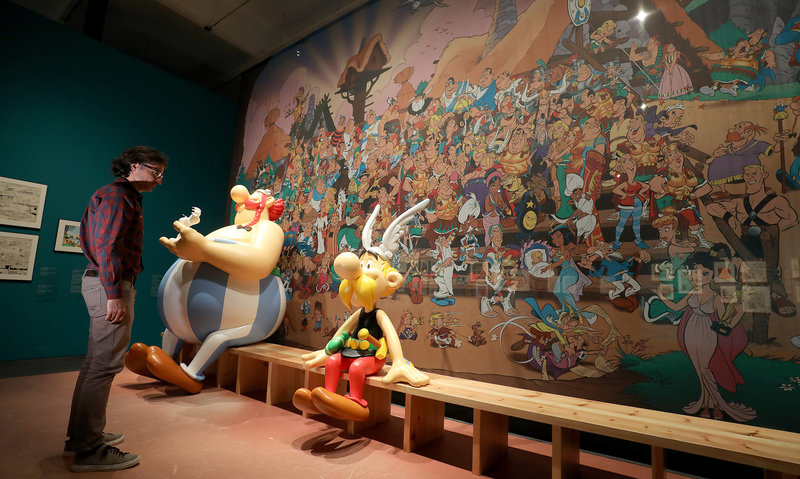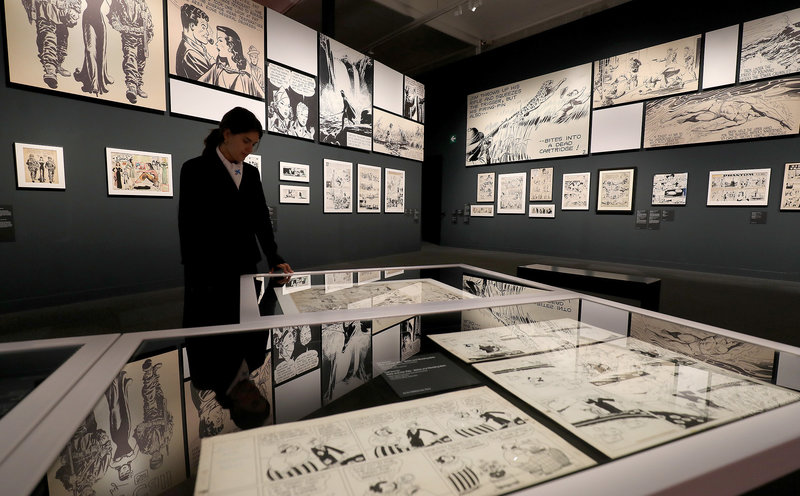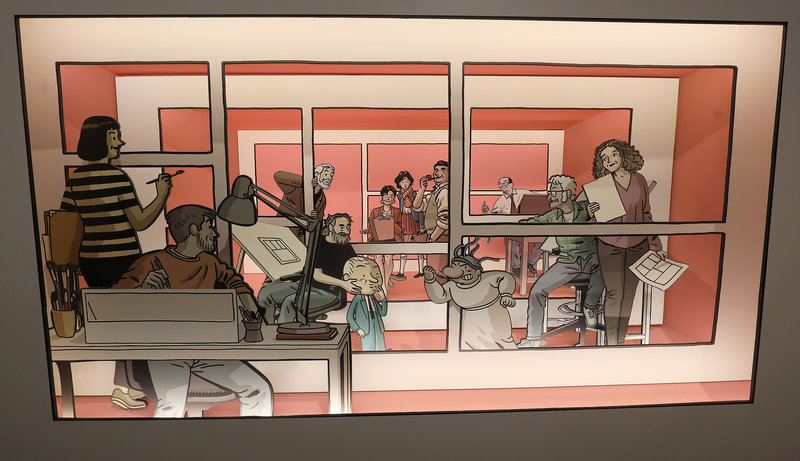An A to Z of comics
CaixaForum Barcelona offers visitors a tour through the history of comic books with many outstanding original works on display from both home and abroad from the collection of Bernard Mahé
Little by little, the world of comics is making an impression on galleries and art centres. The ever more frequent exhibitions of comics and comic strips are winning over a public that may have been unaware of their artistic and creative potential. CaixaForum has joined this trend and you can now see the exhibition ’Còmic’ at the institution’s Barcelona headquarters, before it moves on to other CaixaForums, except for the one in Madrid, where it has already been shown.
’Comic. Dreams and History’ runs until January 15 and displays 350 items of which 300 are original drawings, providing an image of the western comic from its creation to the present day. A handful of collectors and authors apart, the vast majority of the works belong to the French collector Bernard Mahé. This exhibition by Fundació La Caixa has benefited from the advice of journalist and collector, Vicent Sanchis, and, according to Mahé, is aimed at all audiences, both “the neophyte and the specialist”.
The exhibition’s educational component can be seen in its chronological order that begins with an iconic piece: one of the few originals left in the world of The Yellow Kid, created and drawn by Richard F. Outcault, and considered the first comic book series to use word balloons, influencing the basic appearance and use of balloons in subsequent newspaper comic strips and comic books. The Yellow Kid appeared from 1895 to 1898 in the United States, coinciding with the birth of cinema and the explosion of jazz. In the same room we find other items from the early days of comics, such as plates of Krazy Cat, the surreal wonder created by Herriman, and Little Nemo by Winsor McCay, a dreamlike work drawn with an art deco exuberance that is still considered one of the great masterpieces in the history of the comic. “Winsor McCay, in addition to being a forerunner, understood the creative possibilities of the comic even when the medium was still in its infancy. In addition to being a great cartoonist, he was a transgressor,” explains Sanchis. This room also features a painting by George McManus, the American inspiration for work of Tintin creator, Hergé.
At the beginning, the comic was almost exclusively associated with humour, but after the Wall Street Crash of 1929, they began also to reflect everyday stories and this was also the time when the adventure genre first appeared that would give rise to an authentic golden age of American comics and such icons as Prince Valiant and Tarzan by Harold Foster and Flash Gordon by Alex Raymond. Originals of these characters can be seen in the exhibition alongside others, such as Lee Falk’s The Phantom and Mandrake the Magician, superheroes who would break into the Spanish market as El Hombre Enmascarado and Mandrake el mago. In this section we can also see the work of Will Eisner, the creator of The Spirit and the first author to come up with the concept of the graphic novel.
The comic was linked exclusively to the press in its beginnings but later found its own space in comic books. This development coincided with the explosion on to the scene of superheroes, with the birth of such iconic characters as Superman, Batman, Spiderman, Thor and Daredevil, all of which are to be found on display here.
The exhibition also makes space for Spanish comics, from post-war to underground comics. European comics are represented by the work of fantasy comic artist Moebius and the presence of two exceptional Tintin originals. Meanwhile, Italian comic book creator Hugo Pratt is represented, as are such greats in the genre of graphic novels, such as Uderzo, Quino, Schulz and Miller.
art comic






